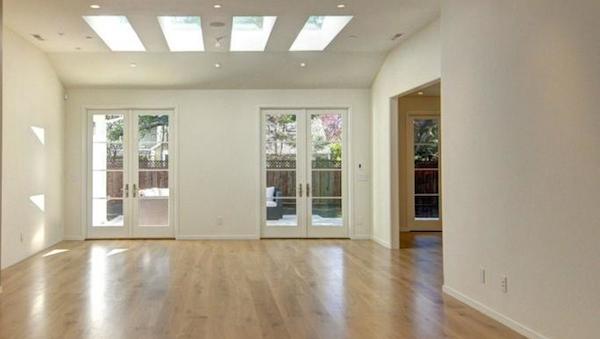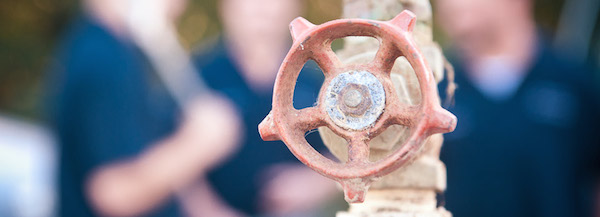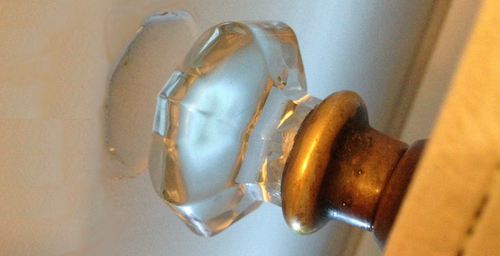You spent countless Sundays at open houses. You signed 50+ legal documents. You wrote a check for a single, heart-stopping, six-digit figure. And now, drumroll please…you’re the lucky owner of your very first house! Congratulations! Now it’s time to get to work. Here’s a checklist of all the things you should do when moving into a new house.
Set up your utilities. As soon as you have a closing date, call your local utility company to set up service. Some accounts you’ll need to establish include:
- Electric and gas
- Trash and recycling
- Water and sewer
- Internet service
- Phone service (if you want a landline)
- Alarm system service
Protect your floors. If your floors need to be refinished, do it before you move in. Put floor protectors on the bottom of all furniture. Learn how to clean the specific type of floor you have. For example, if you have hardwood floors, do you know which cleaning products will work best on them? If you have shag carpet, are you aware that you should invest in a high-end vacuum cleaner? Taking care of your floors properly from the start will result in long-term savings.

Protect your floors from the beginning will pay off in the long run. Photo: Avi Urban Residential & Investment Real Estate, 2015
Replace your furnace filters. Once you know how to replace the HVAC filters in your home, this often-overlooked chore will only take a few minutes. Do it once every six to 12 months and your abated allergies will thank you. Need more help? Read our post on how to choose the right furnace filter.
Start a file (either digital or paper) to collect important home maintenance contact information. Initially, this file may only contain the annual Diamond Certified Directory. As you begin to find individuals and companies you want to hire again, put their contact information in the collection. Then, when you suddenly need a plumber or locksmith, you’ll know who to call.
Locate your main water shut-off valve. Every capable member of your family should know when and how to turn it off.

All residents of a home should know how to turn off the main water supply. Photo: Roman’s Plumbing, 2015
Get to know your circuit breaker. It helps to label each circuit with its corresponding room. As with the water shut-off valve, every capable member of your family should know where the circuit breaker is and how to use it.
Meet your neighbors. Nothing says “hello” like brownies from the local bakery (although doughnuts from Safeway work, too). For better or worse, this is your new community, so make it “for better” by being the first to reach out.
Review your insurance policy. Because the house buying process is so quick in the Bay Area, you may not have had a chance to fully review your insurance policy. Now is the time to make sure you have the coverage you need. In particular, you may not have bought flood or earthquake insurance during the purchase process. If these are important to you, buy the additional coverage now.
Install window coverings. Window coverings can be a great place to start building the design of a room. If you’re not ready to design yet but you still want privacy, you can buy inexpensive, easy-to-install paper blinds at your local hardware store.

Invest in window coverings right away; even inexpensive shades will help you feel more at home. Photo: Shades of Marin, 2015
Install doorstops. In this case, a doorstop isn’t the wedge used to keep a door open; rather, it’s a fixture that’s designed to protect a wall from the impact of a banging door. Take the time to install them now before the wall has been damaged.

Don’t let a doorknob damage your wall. Install door stops as soon as you move into a new home. Photo: American Ratings Corporation, 2015
Stock a toolbox. One advantage to renting is having a handyman on call, but since you no longer have that option, you’ll have to start taking care of some repairs yourself. Here are some tools you should have:
- Hammer and nails
- Drill and drill bits
- Screwdrivers
- Measuring tape
- Wrench
- Wire cutter
- Pliers
- The phone number of a good home repair contractor.
Install fire extinguishers. Buy a fire extinguisher for each floor of your home plus an additional fire extinguisher for the kitchen. To learn how to choose the right kind of fire extinguisher for your home, check out our Fire Safety page.
Change the locks and make extra keys. If it’s safe, find a secret place to hide a spare outside for that inevitable moment when the door swings closed behind you.
Make a family emergency plan. Plan how you’ll get out of the house quickly if you have to, how you’ll evacuate the neighborhood if necessary and where you’ll meet up if you get separated. For more, visit Ready.gov.
Re-stock your disaster kit. Every time you move, it’s a good idea to re-evaluate your needs in the event of a disaster in this particular home. Ready.gov offers easy-to-follow instructions for creating a basic, customizable kit.
Enjoy your new house. Whether you’ve completed your new house checklist or you’re just getting started, take a few minutes to sit down in your box-filled living room. Take a long look around and a couple of deep breaths. You’re home!

Here’s to staying safe and dry in your new home! Photo: Ponderosa Tree Service, 2015

